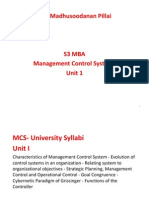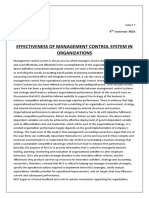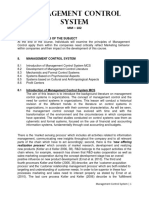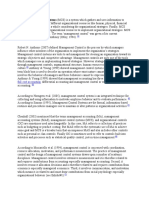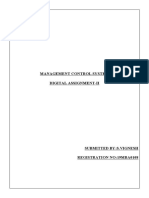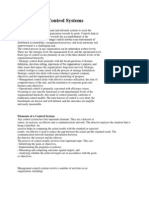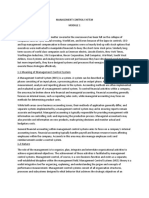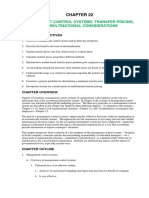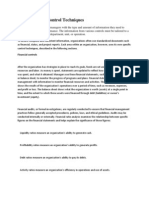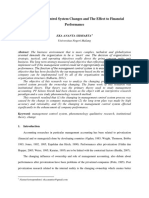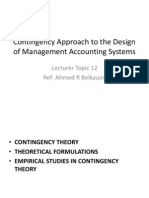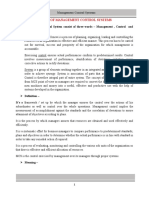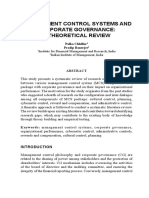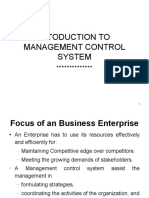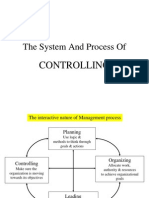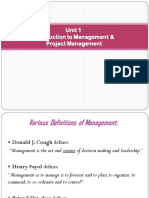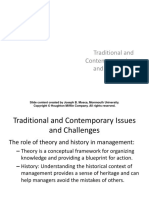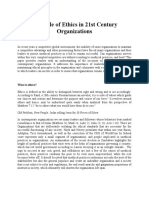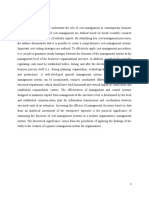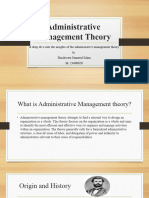Management Control System A management control systems (MCS) is a system which gathers and uses information to evaluate the
performance of different organizational resources like human, physical, financial and also the organization as a whole considering the organizational strategies. also Management Control Systems (MCS) as defined by Anthony (cited by LangfieldSmith, 1997) is the process by which managers ensure that resources are obtained and used effectively and efficiently in the accomplishment of the organization s objectives . MCS is a system used in an organization which collects and uses information to evaluate the performance of the organizational resources that will eventually influence the behavior of the organization to implement organizational strategies. The term management control systems means the use of a number of techniques in organizations to observe and evaluate employee performance against certain management targets. Simons (1987 and 1990) argued that control systems is in four categories, namely i. Diagnostic control systems ii. Boundary control systems iii. Interactive systems iv. Belief systems. These four different management control systems are identified recently by companies as effective categories of controlling system, companies must apply them in a way that maximizes operational effectiveness without limiting employee creativity. This task can be accomplished by using diagnostic measures as a way to improve operational effectiveness and the other three types of control measures as a way to ease its negative effects on employee creativity. Here we see the importance of competition as a powerful tool to impact on MCS The system should be used to define a corporation's character and mission and to set guidelines both for performance targets and for acceptable employee behavior in pursuing such targets. The interactive system should be used to adjust the organization guidelines to changing market conditions, while the diagnostic and the boundary systems should be used to set standards for improving efficiency and creativity. (MCS) is use as a tool for controlling in administration. MCS helps managers to find information and ensure them those performances and behaviors of employees are consistent with organization objectives. Management control system (MCS) is a system that provides useful information for managers to do their duties. This information helps organization in performance.
�A perfect MCS has to monitor not only the internal environment but also has to be sensitive to external changes. Information technology (IT) play a central role in this process. Since, there is no complete and comprehensive system for all organizations. Indeed, every organization needs their own system, which is unique for them, and is adjustable with structure and strategy. (MCS) include techniques and mechanisms which organizations use to pursue objectives, accomplish goals and successfully pursue strategies. Management control systems help to integrate, motivate, support in decision making, communicate objectives, give feedback, etc. Management controls (MC) can be sub-divided into two most important subcategories. The first category involves output controls or results controls, in which specific outcomes are measured, monitored and compared against expectations. This will enable corrective action to be undertaken as and when needed. This category also includes administrative controls or action controls that involve formal rules, standard procedures and manuals and monitoring compliance. The second category involves behavior controls, personnel controls and social contracts. This category involves controls such as values and norms. management accounting systems are also an integral part of management control systems. Management accounting is associated with output or administrative controls because of the emphasis on measurements and outputs, especially in the budgeting process. Management accounting systems provide a language and communication system that can also play an important role in behavioral and social controls. Management control systems aim at influencing actors in order to enhance the efficiency in transactional relationships . Transaction cost economics studies organization from a comparative point of view in which different institutional arrangements are considered alternative ways to organize economic activity .transaction cost economics central aim is to explain why some transactions are more likely to be executed within one form of organization, whereas other transactions tend to be associated with different organizational modes. Another important aspect of management control systems is transfer pricing. It is one of the most important issues in the strategic and operational management practices of large business organizations. Transfer pricing is used by decentralized transnational corporations as a strategic instrument to tackle the issues of brand proliferation. The strategic objectives of international transfer pricing fall into three areas: taxationrelated objectives, internal management-oriented objectives, and international or operational objectives. One of the traditional management control systems is the budgeting process, which has served as the primary internal measurement of performance. Traditional budgeting has served as means of emphasizing boundary systems that focus on financial limits and diagnostic controls management control systems and management accounting are
�constantly evolving in designing and using information and performance management systems for organizational control. One the most important ways to control and measure the performance of organization is Balanced Scorecard (BSC) that was first introduced by Kaplan and Norton in 1992, as a model for implementing strategy. The main thrust of the BSC is that it is generally inappropriate to try to manage using financial measures of performance alone. Financial measures need to be supplemented by other non-financial performance measures and also by a range of leading indicators of future potential performance, which are usually nonfinancial in nature. The BSC assess performance from four perspectives, namely the Financial perspective, the Customer perspective, the Internal business process perspective and the Learning and growth perspective. All in all, management control system can be summed up as an integrated technique for collecting and using information to motivate employee behavior and to evaluate performance.
done by : yara abu jaber


